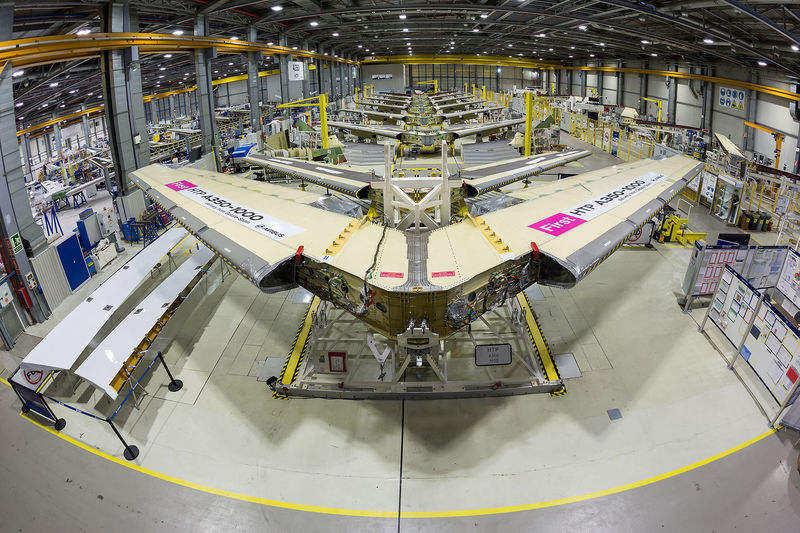The global aerospace and defence (A&D) sector is likely to experience stronger growth in 2017, following multiple years of positive, but subdued growth, according to a new forecast from audit and consulting specialist Deloitte. The forecast sees sector revenues likely growing by about 2% in 2017.
Stable global gross domestic product (GDP) growth, relatively lower commodity prices including crude oil, strong passenger travel demand, especially in the Middle East and Asia Pacific region, will likely drive the commercial aerospace sub-sector growth, the forecast indicates. Commercial aircraft backlog is at an all-time high of ~13,500 aircraft units, representing more than nine and a half years of current annual production rate.
Specifically, strong global airline passenger traffic and improved global airline profits, primarily on account of lower fuel costs are expected to drive increased large commercial aircraft production and in turn commercial aerospace revenues in 2017 and 2018. Deloitte expects almost 100 more aircraft to be produced in 2017, compared to 2016.
On the defence side, resurgence of global security threats, expected increases in US defence budgets, as well as higher defence spending from other major regional powers such as Japan and India are expected to promote global defence sub-sector revenue growth in the near future.
Other forecast highlights:
- The global commercial aerospace sub-sector will likely experience a 0.3% increase in revenues in 2017, aircraft production resumes growth in 2017, driven by strong demand for next-generation aircraft and growing passenger traffic, especially in the AsiaPacific and the Middle East regions. After an unexpected slowdown in production in 2016 to 1,360 units, it is estimated that 1,456 commercial aircraft will be produced in 2017, which is a 7.1% increase over the estimated 2016 production, and a 22.5% increase in annual production compared to five years ago.
- The global supply chain faces a challenge to ensure that increasing requirements for capacity, throughput, quality, on time delivery and pricing can be met. The aerospace supply chain is expected to continue its transformation to reduce costs, respond quicker and to invest more in product innovation, which may result in further industry consolidation as some of the smaller companies may not be able to meet the increased financial, program management, skills, risk-taking and investment requirements.
- Global defence sub-sector revenues are expected to grow 3.2% in 2017 as defence spending in the US has bottomed out and returned to growth, after multi-year declines in defence budgets. In 2017, growth is also expected to be driven by the newly elected US administration’s increased focus on strengthening the nation’s military.
India
The forecast notes that, by 2018, India’s defence budget – now the world’s 4th largest – is projected to increase to $56.5bn as the country recapitalizes and strengthens its military to counter potential threats from China and Pakistan, while upgrading existing assets. Further, the government’s emphasis on timely execution and improved policy, in consultation with industry participants, is expected to lead to technological advancements in the sector, resulting in increased opportunities for the entry of foreign players.
The Indian government is credited with having taken multiple policy initiatives including increased international engagement, a revamped foreign direct investment (FDI) policy, and a new defence procurement procedure with key amendments in offset regulations. In the last 2 years, India has signed defence cooperation agreements and MoUs with over 20 countries, entered the Missile Technology Control regime, and strengthened bilateral relationships with major suppliers.
China
China’s defence budget, the forecast notes, is the second largest in 2016, at $192bn (+6.2%). The country’s military expenditure as a percentage of GDP is seen as low compared to other regions, indicating scope for further increase. China has a military expenditure to GDP ratio of 1.9%, as compared to 2.3% for India, 5.4% for Russia and 3.3% for the U.S.
On the commercial aerospace side, China’s domestic aviation market is growing fast and is expected to be the world’s largest by 2035. The country’s passenger travel demand is estimated to surpass North America and Europe by 2035, with 1.9 trillion revenue passenger kilometers (RPKs) estimated in 2035. Alongside final assembly of Airbus aircraft, the country is also engaged in its own commercial aircraft programmes with the COMAC C919 and the proposed C929 between COMAC and Russia’s UAC.
Deloitte underlines that China revised its Catalogue of Industries for Guiding Foreign Investment in 2015 to expand the range of approved investment activities of foreign entities into the aviation sector.
Middle East
Although the oil price-induced slowdown in defence spending by Middle Eastern countries is a challenge for A&D companies in the U.S. and Europe, national security threats and ongoing conflict in the region will likely maintain a strong order flow. In 2016, despite low oil prices, the UAE’s military expenditure is estimated to increase 7.4% to $23.5bn, with requirements for advanced naval, surveillance, and missile products. Saudi Arabia may be challenged to sustain recent levels of military expenditure due to affordability. Nevertheless, Saudi Arabia’s defence budget for 2016 experienced only a minor reduction as the Kingdom increases its focus on economic diversification.

